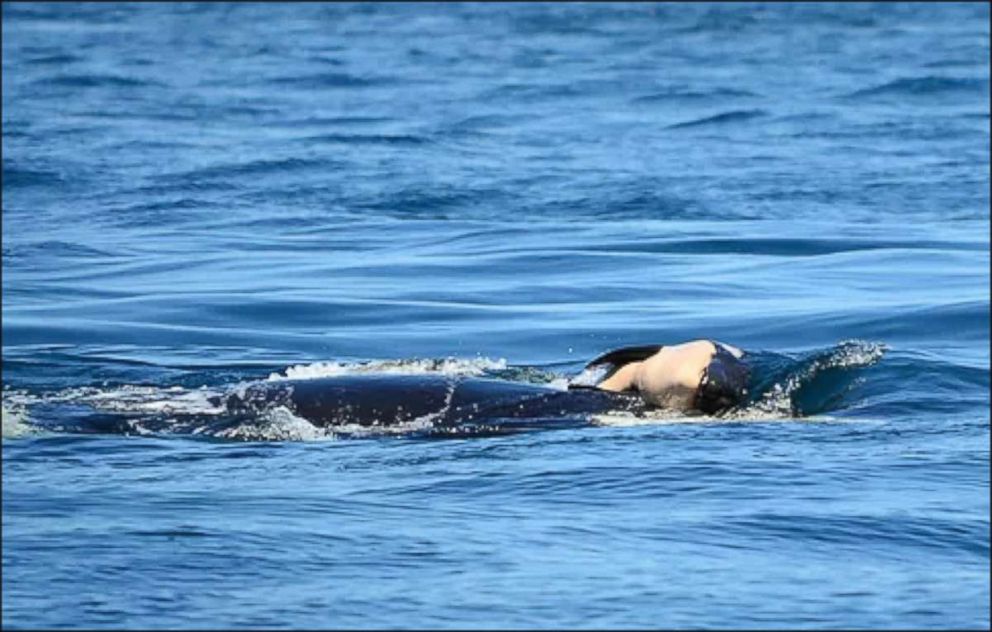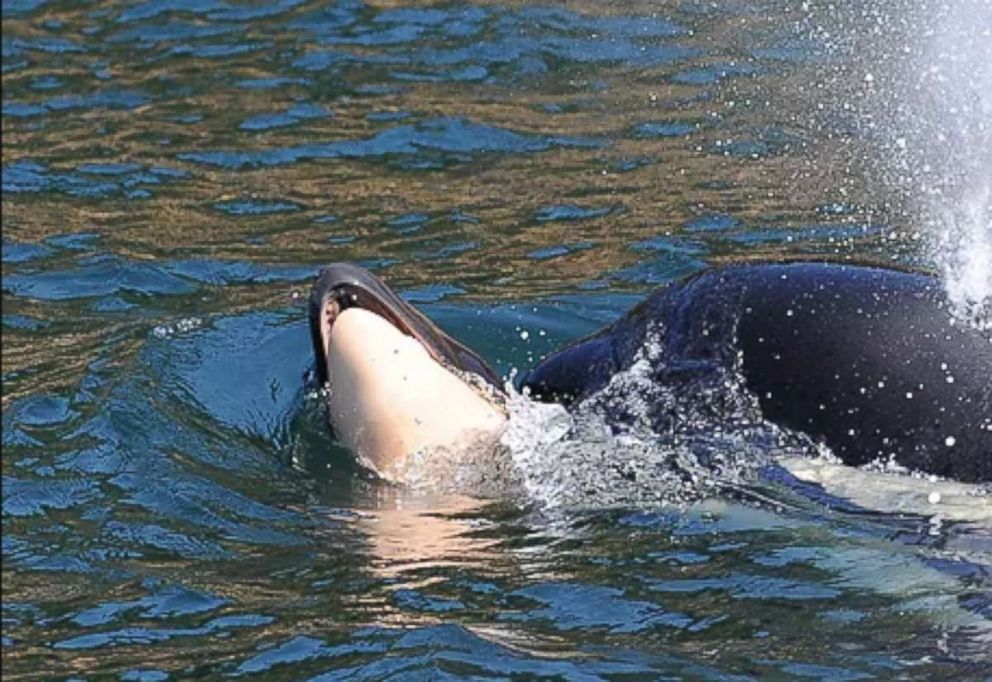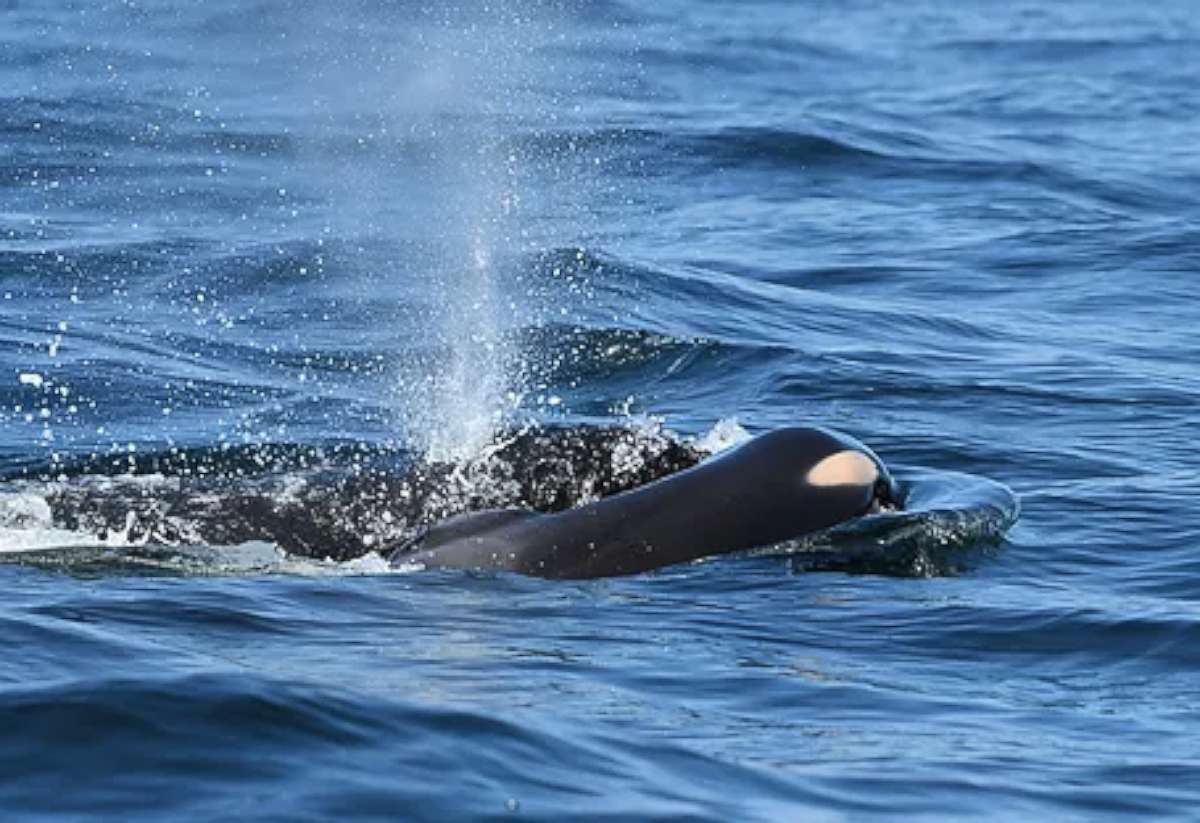Orca whale carries dead calf for days as imperiled habitat makes newborns rare, experts say
A shortage of food leaves females unable to deliver healthy offspring.
A female killer whale who was seen pushing the corpse of its short-lived offspring off the west coast of Canada is a sign of things to come, experts said Thursday.
The calf, which survived for about half an hour, was the first offspring among 75 southern resident killer whales on the West Coast in three years, according to Ken Balcomb of the Center for Whale Research, who said a shortage of food leaves females unable to deliver healthy offspring.
“It’s happening because there is not sufficient food available for the whale, so the mother is not in good condition to have baby that survived,” Balcomb told ABC News in a phone interview.

Balcomb said he spotted the grieving cow, 30-year-old J35, on the morning of July 24 in waters off the coast of Victoria, British Columbia. The calf lived for about half an hour, according to Balcomb.
“After that the mother pushed the dead baby. She’s still pushing it, somewhere up around Vancouver now,” he said. “She’s not willing to give it up yet,” adding that the mother could keep pushing for a week.
Scientists have recorded many cases of whales mourning and grieving their dead newborn calves. The cows would prop their calves on their heads, backs or in their mouths.
“Now we can show people what’s going on,” Balcomb said.
Habitat degradation, over-fishing and toxic waste in rivers are among the obstacles for healthy populations of salmon, the whale’s main source of food, according Balcomb, who said the food shortages disturb the whales’ normal breeding cycles.

“They should be having nine babies a year -- anywhere from six to nine babies a year,” he told ABC News, adding that the cow had not calved in three years and before that had several each year, but half of the offspring did not survive.
“It’s very sad,” Balcomb said. “We know that it’s food.”
In 2010, whale L72 carried her dead new born calf for several hours, according to Robin Baird, a research biologist with the Cascadia Research Collective in Olympia. Though he said he felt privileged to catch sight of this sort of behavior, the sense of melancholy hit him.
“It’s depressing,” he said. “It makes you feel sad to watch another calf did not survive.”
Robin said the death caused by dearth of a significant source of food for whales, Chinook salmon.
Balcomb suggest that the government take serious and immediate action to guarantee that whales have sufficient food.
“They should immediately change policy to emphasize recovery of wild natural salmon everywhere in their provinces and states,” he said.
There are just 75 whales that search for salmon along the coast from Alaska to California, according to Balcomb.
“The management for salmon has been primary for human benefit and commerce,” he said, adding that it would take three to four years to restore salmon stocks sufficient to feed the whales.
“They [the whales] are very skinny,” he said. “Not enough food.”
“They are no newborns surviving,” he told ABC news. “Their youngest whale is about almost 4 years or so, and it’s not healthy. It’s going to die, but maybe not this week, maybe next week.”

In the last three years, not a single calf survived, according to Brad Hanson, wildlife biologist at the Northwest Fisheries Science Center in Seattle.
Though there is no diagnostic assessment to the cause of death, he said there are a number of risk factors that the population faces, he said.
“One of our primary concerns is viability because these animals are Chinook salmon specialists,” Hanson told ABC News in a phone interview.
“Many of the chinook population are listed as endangered in the United States, and then related to that it’s just the quality of prey [salmon] that there are contaminants in the prey,” Hanson said. “We are concerned that this contaminant may in fact cause problems with the immune system of the whales and make them more susceptible to diseases."
He said his group is “trying to better understand the diseases that these animals are subjected to because that’s another source of mortality.”
Balcomb said the public should insist governments manage natural resources for environmental reasons – and “not just for commerce.”
“The mountains and the rivers, and oceans are not just for making money,” Balcomb said. “They are for animals to live in.”
He said that the experts predict that by 2100, the natural salmon will all be extinct, and the whales probably extinct much sooner.
“If the babies can’t survive, they are destined for extinction,” Balcomb said. “Now is the time for change.”



